Périer, lord of Lestampe and last baron of Mirandol |
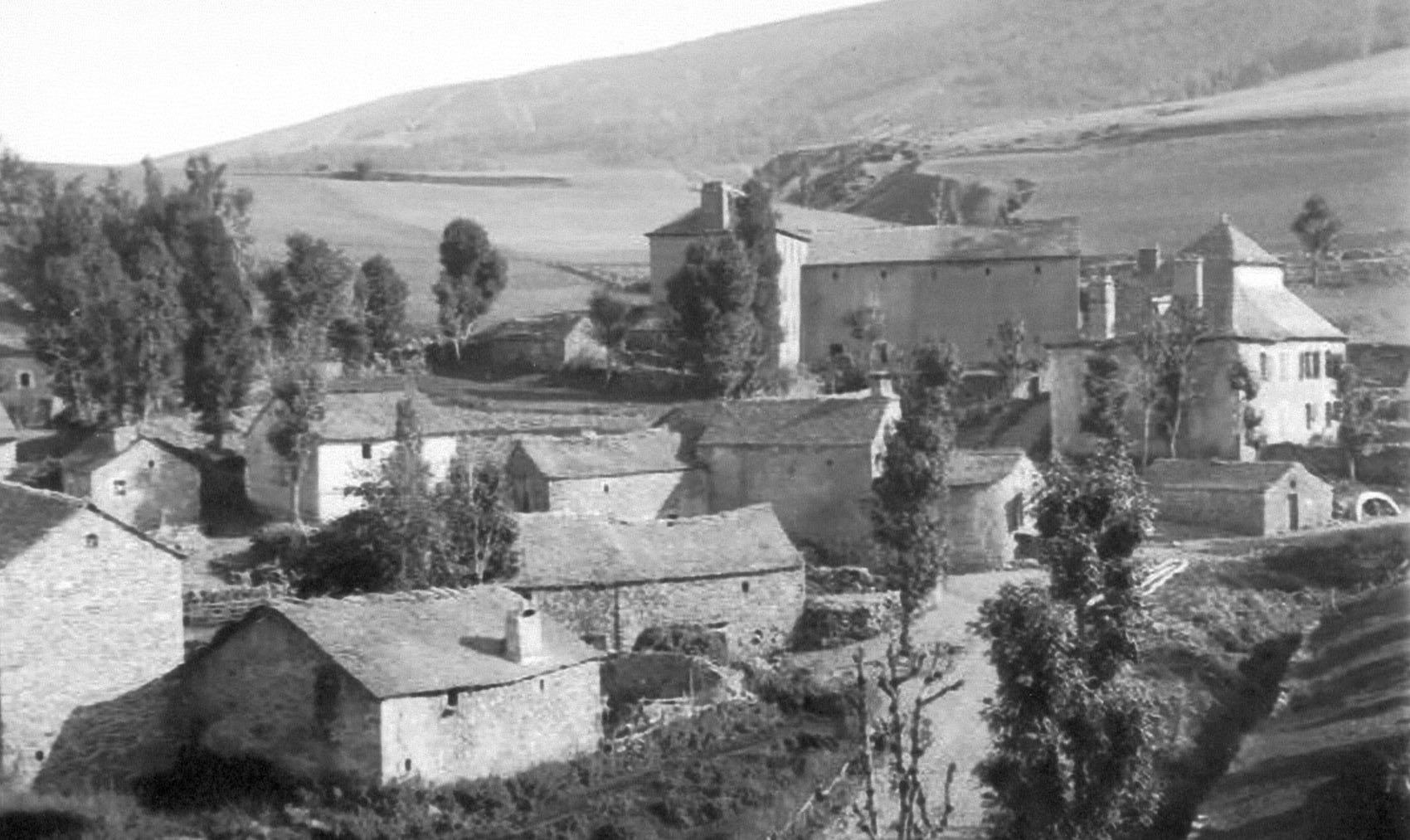
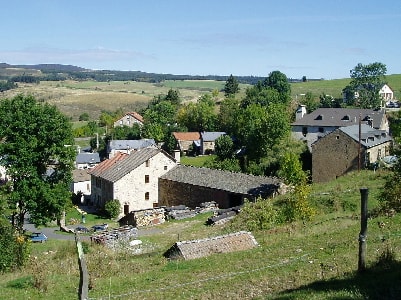
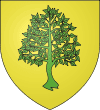 The museum of Mende possesses an engraving drawn by Romanet in 1780. The drawing represents a man in his sixties. His hair is graying and curly, in the fashion of Louis XVI. His forehead is wide, authoritative, and his gaze is direct; everything contributes to portraying the marks of a strong personality. At the bottom of the portrait, the painter reproduced a coat of arms representing a tree, more precisely a pear tree (in the local dialect: périé) on a field of gold. It is the coat of arms that Pérrier Guillaume chose when he was ennobled around 1745, and he later became the last lord of Lestampe and, shortly thereafter, the last to bear the title of Baron of Mirandol.
The museum of Mende possesses an engraving drawn by Romanet in 1780. The drawing represents a man in his sixties. His hair is graying and curly, in the fashion of Louis XVI. His forehead is wide, authoritative, and his gaze is direct; everything contributes to portraying the marks of a strong personality. At the bottom of the portrait, the painter reproduced a coat of arms representing a tree, more precisely a pear tree (in the local dialect: périé) on a field of gold. It is the coat of arms that Pérrier Guillaume chose when he was ennobled around 1745, and he later became the last lord of Lestampe and, shortly thereafter, the last to bear the title of Baron of Mirandol.
On the lower margin of the painting, the following couplet can be read, which, if not excessively flattering, would be a fine tribute: "Good father, good relative, good citizen, good master. Having, what is rarely seen. Good friends and knowing how to be."
After two hundred years, the small village of Lestampe, nestled in a limestone fold of the Goulet, despite the ravages of time, revolutions, and pillaging, still retains what continues to be called "the castle." In fact, it is only a part of what was the splendid residence mentioned in documents scattered across the departmental archives of Lozère, Gard, the Grand Seminary of Mende, and among several individuals in Chasseradès.
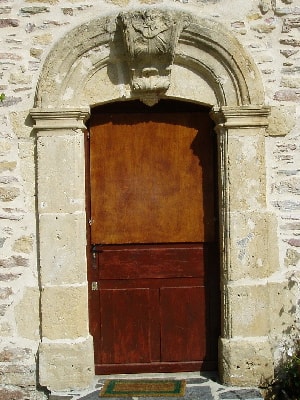 Demolitions and renovations have profoundly altered the buildings. Of the majestic portal made of beautifully worked stone, in the Louis XV style, only a part of the castle remains; one wing survives. The ground floor of a neighboring building, with its round pillars, supporting a nave with ribbed arches, suggests what might have been a chapel. The elders of Lestampe speak of the splendor of the furniture of what was called "the green room," "the pink room." The farm buildings are distinctly separated from the dwelling.
Demolitions and renovations have profoundly altered the buildings. Of the majestic portal made of beautifully worked stone, in the Louis XV style, only a part of the castle remains; one wing survives. The ground floor of a neighboring building, with its round pillars, supporting a nave with ribbed arches, suggests what might have been a chapel. The elders of Lestampe speak of the splendor of the furniture of what was called "the green room," "the pink room." The farm buildings are distinctly separated from the dwelling.
The master of the Estampe
Guillaume Pérrier, originally from Lestampe, was born in 1720, from a bourgeois family of Lestampe. His father, Charles Pérrier, engaged in the fabric trade for a time, with more or less success, as he was imprisoned in Anduze and Nîmes for being a bad payer. However, he ensured the education of his children: two boys, Guillaume and Joseph known as Labro, and a girl, Louise. Very intelligent and possessing a sense of business, Guillaume Pérrier pursued his studies, and through hard work and perseverance, he even became a lawyer.
 Around 1745, he married Marie Rolland, the daughter of the prosecutor at the Parliament of Toulouse. Shortly thereafter, he was appointed “capitoul” of the city. This appointment automatically ennobled the beneficiary. From this moment on, he became Mr. De Pérrier.
Around 1745, he married Marie Rolland, the daughter of the prosecutor at the Parliament of Toulouse. Shortly thereafter, he was appointed “capitoul” of the city. This appointment automatically ennobled the beneficiary. From this moment on, he became Mr. De Pérrier.
But the legal intricacies soon became insufficient for his activity; he embarked on tax collection, particularly of the “equivalent” (tax on meat and wine). Thanks to his tireless activity and robust health as a mountain man, he expanded “his business” and soon became the general farmer of taxes for part of Languedoc and Aquitaine.
Knowing how to leverage his connections, he successively became, a power of attorney of the county of Eu; secretary of the commands of the Duke of Penthièvre; a member of his council. In 1784, Guillaume de Pérrier, Baron of Mirandol, was an advisor to King Louis XVI, secretary-general of the French Navy, and general administrator of His Majesty's estates. One could say that little Guillaume had, without wasting time, climbed to the highest levels of the ladder.
In the meantime, his fortune had become colossal, and he acquired immense estates (just at the castle of Lestampe, in 1793, it took 49 days to take inventory!). While to maintain the lavish lifestyles of royal courts, old noble families were going bankrupt and were forced to sell lands, rights, and castles, some, like our Guillaume, were managing just fine. Thus, the descendants of the Good Lady of Mirandol (Morangiès de Baltz) gradually sold all their lands to Guillaume Pérrier.
It began in 1763 with the purchase of "la Borio" or the farm of the castle of Mirandol, and the entire lordship passed there, except for the rock of the castle and the title. In 1768, it was the lordship of Belvezet. Pérrier helped build the chapel of this village, in 1772, Grèzes, Montjoie, Escudière. On January 18, 1777, it was the land of Mazel d'Allenc, of Larzalier. In 1778, the lands of Lestampe and "l'Aufage" (Daufage: in Latin, "altus fagus": the village of the high beech). In 1779, the lordship of Puylaurent passed as well. In 1780, Guillaume bought "the chapel known as Mirandol in the parish church of Chasseradès, which urgently needed repairs (we saw that this chapel had been built by the barons of Mirandol). On January 19, 1785, Guillaume bought the castle of Mirandol and the title. From that day on, he signed "de Pérrier, Baron of Mirandol."
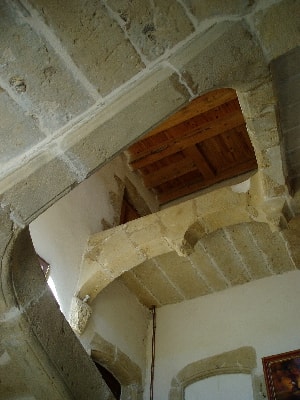 He would be the last to carry this title, and he would not bear it for long. The Revolution of 1789 was there, which would destroy even more rapidly than it had amassed this immense fortune.
He would be the last to carry this title, and he would not bear it for long. The Revolution of 1789 was there, which would destroy even more rapidly than it had amassed this immense fortune.
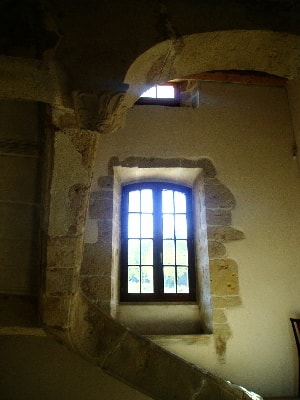 On May 23, 1790, Pérrier wrote to his steward Rousset: "I have always feared civil war... my fears are starting to come true. The evil communicates from one to another, and I fear even more a general conflagration as there is defection in the troops and the executive power is powerless and without vigor.
On May 23, 1790, Pérrier wrote to his steward Rousset: "I have always feared civil war... my fears are starting to come true. The evil communicates from one to another, and I fear even more a general conflagration as there is defection in the troops and the executive power is powerless and without vigor.
In Paris, we live in constant fear and alarm." One can imagine the life of the rich Guillaume, forced to hide, trembling at the thought of being arrested and guillotined "like many of the general farmers."
Guillaume Pérrier died in Paris on August 27, 1792. He left only one daughter, married to the Count of Saint Haon, who had no children. There was nothing left of De Pérrier... not even the name.
A trick from Pérrier de Lestampe.
On the wall of Seville Cathedral, one notices an old chest bound with complicated ironwork. But what strikes is that this chest has been forced open; the mutilated locks and damaged lid bear witness to it. This is the chest where the Cid Campeador, the valiant knight fighting against the Saracens, claimed to have locked away the treasures representing the means to arm his army. As the Cid was delayed in returning from war, curiosity getting the better of them, the good people of Seville could not hold back any longer: they had the chest broken open... only to find banal pebbles.
Did Guillaume Pérrier of Lestampe keep this legend secret? According to Mr. Tardieu, a surveyor from Chasseradès, that would not be impossible. In a letter from Canon Costecalde, he reports the following legend, which he claims to have from his grandfather, who was a contemporary of Pérrier and which we summarize below.
So, at that time, the scheming Guillaume, richer in ambition than in money (he was still at the beginning of his career!), went to Paris to obtain a tender for a general farming of some tax. But the required security was substantial. Pérrier's purse was empty. How to proceed?
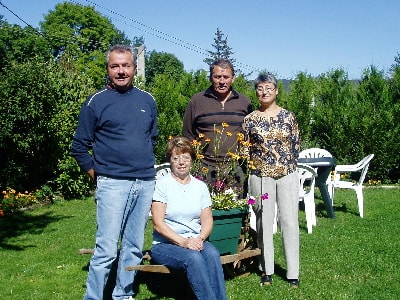 As a good Auvergnat, somewhat of a horse dealer, he resorted to trickery to earn money without shelling out. Before arriving in Paris, Pérrier had several very strong boxes made, bound with iron, equipped with large locks. Unbeknownst to all, he filled the boxes with river pebbles; then he sealed them very securely, loaded them onto carts which he pretended to supervise very closely, not taking his eyes off them and openly recommending "the treasure" he was carrying. Upon arriving in Paris, he had the boxes taken to his apartment, redoubling his vigilance.
As a good Auvergnat, somewhat of a horse dealer, he resorted to trickery to earn money without shelling out. Before arriving in Paris, Pérrier had several very strong boxes made, bound with iron, equipped with large locks. Unbeknownst to all, he filled the boxes with river pebbles; then he sealed them very securely, loaded them onto carts which he pretended to supervise very closely, not taking his eyes off them and openly recommending "the treasure" he was carrying. Upon arriving in Paris, he had the boxes taken to his apartment, redoubling his vigilance.
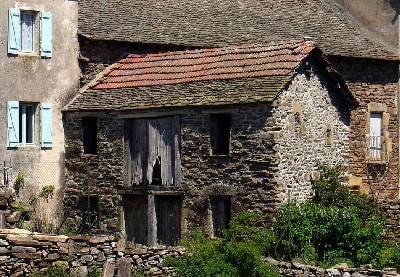 Such precautions aroused curiosity. The secret police of the other candidates for the tender had already warned them that a serious competitor had just arrived with extraordinary guarantees. Scared of this competition, the aspiring general farmers sent their finest agents to Guillaume Pérrier to prevent him from bidding. He had them plead for a long time, his hand on his chests, like a man sure of himself, then he agreed, but insisting on "the big package" and "cash!"
Such precautions aroused curiosity. The secret police of the other candidates for the tender had already warned them that a serious competitor had just arrived with extraordinary guarantees. Scared of this competition, the aspiring general farmers sent their finest agents to Guillaume Pérrier to prevent him from bidding. He had them plead for a long time, his hand on his chests, like a man sure of himself, then he agreed, but insisting on "the big package" and "cash!"
The next day, as he was leaving for Lestampe, the hotelier respectfully said to him: "My lord, where should I send the precious boxes that remain in your apartment?"
"To the Seine," replied Guillaume with a burst of laughter that was lost in the noise of the coach setting off, carrying the future Baron of Mirandol toward other adventures.
Today, at the Château de L'Estampe, a couple lives there in the summer season, taking care of the restoration of what was the famous castle of Guillaume de Pérrier known as "Baron of Mirandol." The continuous staircase, the large 18th-century fireplace, the frescoes, coats of arms as well as the vegetable garden a bit further up where the small path leads to the small road from Bleymard.The estate of several hectares is covered with woods and meadows where, for their midday meal, the gentleman and his friend went to look for some porcini mushrooms while the ladies enjoyed the sun preparing the aperitif.
Thanks to them for allowing me to discover a bit of the life of Guillaume, master of L'Estampe, with the coat of arms of the pear tree on a field of gold and the wealth of this little lost village in Lozère!
Former holiday hotel with a garden along the Allier, L'Etoile Guest House is located in La Bastide-Puylaurent between Lozere, Ardeche, and the Cevennes in the mountains of Southern France. At the crossroads of GR®7, GR®70 Stevenson Path, GR®72, GR®700 Regordane Way, GR®470 Allier River springs and gorges, GRP® Cevenol, Ardechoise Mountains, Margeride. Numerous loop trails for hiking and one-day biking excursions. Ideal for a relaxing and hiking getaway.
Copyright©etoile.fr